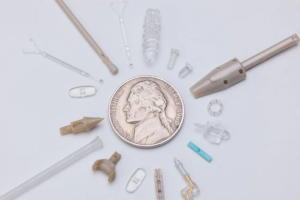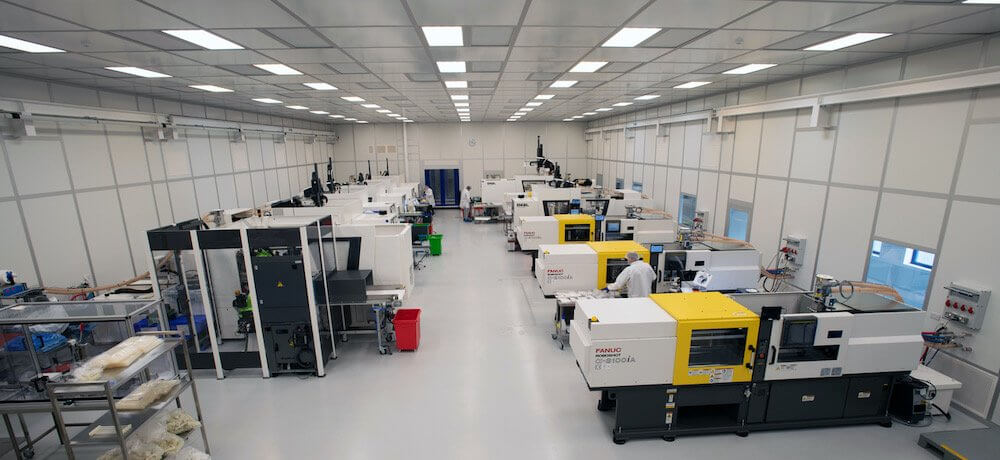Injection molding didn’t just grow after WWII—it exploded. Driven by wartime necessity, visionary inventors, and new materials, injection molding transformed from a niche manufacturing method into the heartbeat of global production. This is the story of how plastic molding rose to dominate industries, shape economies, and revolutionize everyday life.
Wartime Breakthroughs and Revolutionary Screws (1940s)
World War II reshaped the industrial landscape. Metals and rubber became scarce, catapulting plastics into the spotlight. From aircraft components to helmet liners, plastic emerged as a hero material. But injection molding machines had limitations—until James Watson Hendry stepped in.
In 1946, Hendry invented the reciprocating screw injection molding machine. Unlike older plunger-based machines, Hendry’s screw mixed, melted, and injected plastic far more precisely. It allowed for vibrant color blends, consistent quality, and the revolutionary use of recycled materials. Plastics molding had just gotten a massive upgrade.

Plastics Go Mainstream (1950s)
In the optimistic post-war boom, injection molding flourished. New engineering plastics—ABS, HDPE, polypropylene, and polycarbonate—arrived, offering strength, heat resistance, and flexibility. By 1954, ABS (used later in LEGO bricks) and polycarbonate (Lexan) revolutionized products from telephones to automotive interiors.
Karl Hehl’s compact Arburg molding machine (1954) demonstrated plastics’ power even on a small scale. These versatile presses found their way into European workshops and factories, laying the groundwork for a manufacturing revolution.
Innovation Takes Shape (1960s)
The 1960s saw injection molding leap forward technologically. Arburg introduced the Allrounder—a flexible machine capable of horizontal and vertical molding. Multi-component injection molding also emerged, enabling multi-colored or multi-material products like two-tone telephone dials to be produced in one seamless step.
Machines grew larger, with advanced hydraulics handling bigger items like TV cabinets and appliances. New processes like reaction-injection molding (RIM) opened doors for automotive parts, creating products previously impossible or impractical with metals.
Automation and the Plastics Revolution (1970s)
By the 1970s, plastics reigned supreme. Structural foam molding made lightweight furniture and equipment feasible, while the first microprocessor-controlled machines appeared, starting a digital transformation. Automation took hold—robots removed parts, improving speed and safety.
Perhaps the decade’s boldest innovation came from James Hendry again: gas-assisted injection molding. By injecting nitrogen into molds, manufacturers could create large, rigid, lightweight parts without defects. The plastic age had truly arrived—surpassing steel production globally by 1979.
Precision, Power, and Digital Domination (1980s)
The 1980s accelerated the digitization and precision of injection molding. CAD/CAM technologies revolutionized mold-making, enabling intricate designs and perfect repeatability. In 1985, Cincinnati Milacron and Fanuc launched the first all-electric injection molding machine, boasting unprecedented accuracy and energy efficiency.
Meanwhile, Engel’s tie-bar-less design in 1989 simplified large and awkward mold setups, reshaping industry standards. Co-injection molding and gas-assist methods further expanded manufacturing possibilities. Injection molding was no longer just efficient—it was becoming nearly limitless.
Globalization, Miniaturization, and Multi-Material Mastery (1990s)
By the 1990s, plastics were firmly entrenched in global manufacturing, surpassing 100 million metric tons annually. Asian manufacturers surged forward, while Europe and Japan pushed boundaries in automotive and electronics molding.
Micro-molding emerged, meeting medical and electronics demands for incredibly tiny, precise parts. Machines specialized in molding components weighing fractions of a gram. Multi-material molding flourished too, creating soft-touch products like ergonomic toothbrushes and intricate automotive lights.

Entering the Digital Age (Early 2000s)
As the millennium turned, injection molding embraced full digital integration. Advanced simulation software, Industry 4.0 connectivity, and precise electric machines defined the era. Plastics production skyrocketed to 200 million tons by 2000, and injection molding was everywhere—from medical implants to car bumpers, from microelectronics to furniture.
Sustainability concerns led to innovations in bioplastics and recycling, while digital controls allowed unprecedented oversight of efficiency and quality.

What Comes Next?
But injection molding isn’t done evolving. With digital technology, artificial intelligence, sustainable materials, and smart factories becoming reality, a new era is about to begin. How will 3D printing integrate with molding? Will bio-based plastics replace traditional polymers entirely? And how might Industry 4.0 reshape injection molding once again?
The next era promises transformations more profound than anything we’ve seen.
Stay tuned for the thrilling conclusion in Part 3: The Future of Injection Molding—where the impossible becomes reality.
